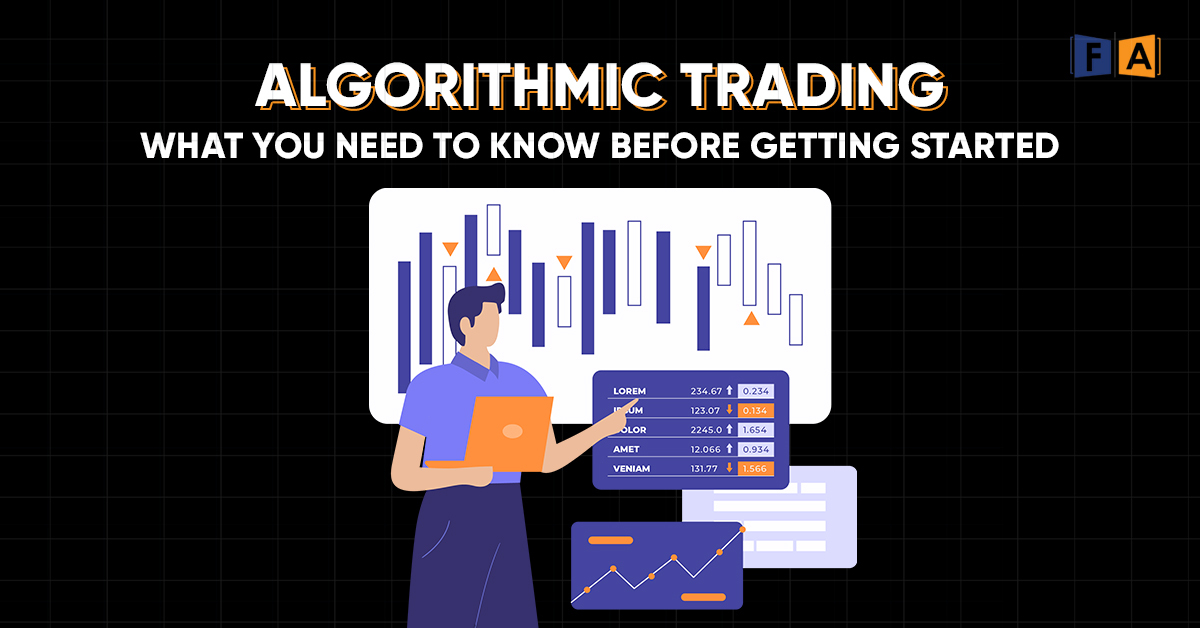
Algorithmic Trading: What You Need to Know Before Getting Started
Algorithmic trading is a method of executing orders using automated pre-programmed trading instructions in which you consider variables such as time, price, and volume. This type of trading attempts to leverage the speed and computational resources of computers relative to human traders. Algorithmic trading has been gaining traction with both retail and institutional traders.
What is Algorithmic Trading?
The term algorithmic trading is often used synonymously with automated trading systems. Earlier algo trading was very restrictive and was only used or deployed by hedge funds. But with ease of coding and simpler language of coding coming in now even as an individual trader I can use algo trading. Algorithmic trading is referred to as algo trading.
Algo trading is a sort of trading in which trades are carried out using computer algorithms based on mathematical models. The algorithms are made to quickly assess market data, spot trading opportunities, and complete trades. Both institutional and retail traders utilize algorithmic trading to transact in a range of financial assets, such as stocks, bonds, currencies, and commodities.
Example Of Algorithmic Trading
Let me give you a simple example or a very simple algo to understand what is algo trading. Let’s say the market opens at 9: 15 and I code and build a system that once the price crosses the high of the first 15 minutes of trading a buy is triggered and once prices break the low of the first 15 minutes of trading a sell is triggered. This is referred to as execution algo as when your programmed condition matches the computer itself will trigger a buy or a sell for you. Based on your entry you can program a profit target and also a stop loss.
Algo signals for entry exit and risk management can be created and coded based on price, indicators and oscillators, and statistical conditions. Any condition for a trade can be coded and on the same, an algo can be created.
My Learning As an Algo Trader
Sharing my experience as an individual trader, it is simple and easy to create algo strategies based on price and various oscillators and indicators we commonly apply in trading, like studies based on moving averages, relative strength, and price momentum. But you should be aware of the five steps involved in algo.
Step 1: Create a trading strategy
Step 2: Code the strategy
Step 3: Back-test the strategy for a minimum of three months to see drawdown, risk and return
Step 4: Finetune the strategy known as strategy optimization
Step 5: Deploy in the live market environment
Nowadays most technical analysis application gives you the feature of strategy creation along with backtesting and optimization. But to execute your trading strategy in algo form that is trade execution without human intervention you need to be literate in coding in Python language. To execute the trades you will need a Broker’s API. Nowadays many online brokers are providing you with API. If you don’t have knowledge of coding in Python then you can execute your algo signals manually.
Benefits of algo trading
Compared to manual trading methods, algo trading has a number of advantages. Algorithmic trading executes trades more quickly and accurately while also assisting traders in avoiding the emotional biases that might influence human trading decisions.
Algorithmic trading also allows for faster and easier execution of orders, making it attractive for exchanges. In turn, this means that traders can quickly book profits off small changes in price. The scalping trading strategy commonly employs algorithms because it involves rapid buying and selling of securities at small price increments.
Conclusion
To do algo trading you should know how to create trading strategies and trading systems. You should know how to back-test and optimize the trading system. Know the drawdown on your strategies and the returns over a specified time frame. Learn to code the strategy in Python for auto execution.





